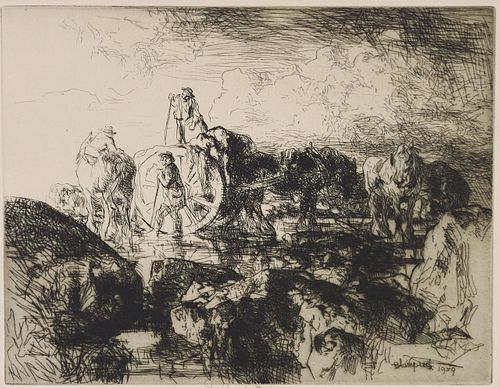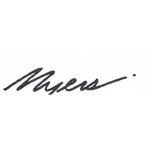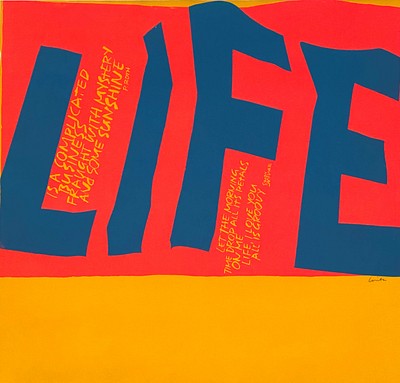Edmund Blampied (British, 1886-1966) Etching Print
Two ways to bid:
- Leave a max absentee bid and the platform will bid on your behalf up to your maximum bid during the live auction.
- Bid live during the auction and your bids will be submitted real-time to the auctioneer.
Bid Increments
| Price | Bid Increment |
|---|---|
| $0 | $10 |
| $100 | $25 |
| $500 | $50 |
| $1,000 | $100 |
| $2,500 | $250 |
| $5,000 | $500 |
| $10,000 | $1,000 |
| $15,000 | $2,500 |
| $50,000 | $5,000 |
| $100,000 | $10,000 |
About Auction
Apr 30, 2023
Fine Art Auction - 35th Anniversary Myers Antiques auctions@myersfineart.com
- Lot Description
Edmund Blampied (British, 1886-1966) Print. Title - Seaweed Harvest. Etching. Signed at bottom in pencil E. Blampied. Also signed in plate lower right Blampied 1939. Label on inside from the Print Club Publication, No. 19 A Jersey Vraic Cart, Etching by Edmund Blampied 1941. The Print Club, Cleveland, Ohio. Image size measures 9.2 inches high, 11.5 inches wide. Sheet size measures 11.5 inches high, 15.5 inches wide. Frame measures 15 inches high, 20 inches wide. Tape hinged at top. Not laid down. In good condition.
From Askart.com: Edmund Blampied was one of the more eminent artists to come from the Channel Islands, yet he received no formal training in art until he was 16 years old. He was noted mostly for his etchings and drypoints published at the height of the print boom in the 1920s, but was also a lithographer, caricaturist, cartoonist, book illustrator and artist in oils, watercolours, silhouettes and bronze. Edmund Blampied (1886-1966) was born on a farm in the Parish of Saint Martin, Jersey in the Channel Islands, five days after the death of his father, John Blampied. He was the last of four boys and was brought up by his mother, Elizabeth, a dressmaker and shopkeeper mostly in the Parish of Trinity, Jersey. His first language was Jèrriais. He finished parochial school at the age of 14 and went to work in the office of the town architect in Saint Helier, the capital of the island. Some of his pen and ink sketches of an agricultural show in May 1902 were noticed by Mlle Marie Josephine Klintz, a woman who ran a local private art school. She gave the young Blampied his first formal lessons in art and introduced him to watercolours. His caricatures of politicians such as the Constable of St. Helier, Philippe Baudains, during a local election brought Blampied to the attention of a businessman named Saumerez James Nicolle who offered to sponsor him at art school in London, provided he tried to get a scholarship. In January 1903, aged 16 years old and barely able to speak English, Blampied left Jersey to study at the Lambeth School of Art, formerly the South London School of Technical Art and now called the City and Guilds of London Art School, where he was taught by Philip Connard R.A. and Thomas McKeggie. After taking a test and submitting some drawings, in May 1904 Blampied won a £20 London County Council (LCC) Scholarship for two years to continue his studies at any LCC art school. Later that year he was selected by the head of the Art School to work part-time on the staff of a national newspaper, The Daily Chronicle, which enabled him to earn some extra money. His first published illustrations appeared in The Daily Chronicle on 13 January 1905. In September 1905 Blampied transferred from the Lambeth School of Art to the LCC School of Photo-engraving and Lithography at Bolt Court for the final year of his scholarship. There he became friends with the artists and illustrators Salomon van Abbe, John Nicolson and Robert Charles Peter. It is believed that, after finishing full-time studies at Bolt Court in the summer of 1906, he continued to work at The Daily Chronicle and then perhaps at other newspapers while studying in the evenings at Bolt Court, though very little is known about this period in his life. Blampied's earliest etchings are dated December 1909, suggesting that he did not begin to learn this technique until the academic year 1909-1910; his teacher at Bolt Court was Walter Seymour. Blampied's prints were first shown at an exhibition of students' work in March 1914, where his etching of an ox cart was noted by the correspondent of The Times. The first print believed to have been published was an etching entitled At the wings, which was reproduced in the Annual Report of Bolt Court in 1914. Blampied later recorded his method of working on zinc for etching and copper for drypoint in Ernest Stephen Lumsden's treatise The Art of Etching. Blampied wrote: I generally chosen from amongst my various drawings one which would tend to produce a successful plate. I do not trace on to the copper, but copy a few important lines on to the bare metal with litho-chalk. I then sketch over this with an ordinary sewing needle and rub in a little black oil-colour. . . From the first my efforts are to improve on the sketch until I consider the plate finished. . . In very few cases do I touch a plate after the first proof, so the majority have but one state. If I am dissatisfied with either the composition or details, I prefer to start afresh upon another plate rather than make radical alterations. At the end of 1911, while he was developing his skills as an etcher, Blampied decided to try his luck as an independent artist with his own studio. The rapid developments in colour printing and advertising of the time were creating a great deal of work for commercial artists for book and magazine publishers in London. The first recorded illustration was for a piece of sheet music entitled Glamour Valse, published by Ascherberg, Hopwood and Crew. Blampied quickly gained commissions to provide drawings for Pearson's Magazine, The Sketch, The Sphere, The Ladies Field, The Queen and The Graphic, many of which were signed Blam, a diminutive first recorded in The Tatler in January 1916. He used this diminutive for much of his commercial work for books and magazines, including three children's books for the Edinburgh publisher Thomas Nelson and Sons, Blam's Book of Fun, The Jolly ABC, and The Breezy Farm ABC, all published in 1921, and for much of his work for Pearson's Magazine, Hutchinson's Magazine, The Bystander, and The Sketch between 1916 and 1939. Blampied's etchings were brought to the attention of the art dealers and publishers Ernest Brown and Phillips of the Leicester Galleries in London through an introduction from H. Granville Fell, an artist and art editor. The Leicester Galleries offered Blampied a contract and three prints were shown to the general public in February 1915 in the first of a series of exhibitions of prints called Modern Masters of Etching. Blampied's most famous print, called Driving home in the rain, which had been designed in 1913 and transferred to a zinc plate in 1914, was not shown at the Leicester Galleries until November 1916 where, according to a Jersey newspaper of that time, it received a great deal of attention and admiration. On 5 August 1914 Edmund Blampied married Marianne van Abbe, who was the sister of Dutch-born artists Joseph and Salomon van Abbe. They had no children. Marianne had acted as his agent for several years before they married, and continued to do so until Edmund's brother John began working as an artist's agent in the 1920s. She was a great support to Blampied in his work and prompted him to travel and see the world. When conscription was introduced in Britain in 1916, Blampied returned to Jersey in the autumn of that year to be prepared to be called up for military service. In June 1917 he was classified as not fully fit for active service and was put on guard duties in the Royal Jersey Militia. Although there was a gap in commissions for illustrations while he settled into military life, by early 1918 he had re-established his connections with the Scottish book publishers Thomas Nelson and Sons of Edinburgh, for whom he illustrated many children's books and annuals during and immediately after the war. Blampied quickly re-established himself in London in September 1919 after his return from Jersey and his etchings were acknowledged by the Royal Society of Painter-Etchers and Engravers who elected him an Associate in March 1920 at the same time as the wood engraver Gwen Raverat. He was elevated to the full fellowship a year later. Blampied was elected at the end of what has been called the etching revival, but there was still a strong market for prints, mainly as an inexpensive investment in art. While developing his skills as an etcher and lithographer in the early 1920s Blampied continued to work extensively for magazines and contributed hundreds of political cartoons and decorative drawings to The Bystander magazine between 1922 and 1926; he illustrated short stories by E.F. Benson and other authors in Hutchinson's Magazine, and continued to design book jackets for publishers including Hodder & Stoughton, Herbert Jenkins, T. Fisher Unwin, Eveleigh Nash, William Collins and Constable. The books for T. Fisher Unwin included dust jackets for new impressions in 1923 of eleven of E. Nesbit's famous children's novels and James Hilton's rare second novel called Storm Passage. Blampied also illustrated a film edition of Black Beauty by Anna Sewell and a new edition of The Roadmender by Michael Fairless. At the end of 1926 Blampied gave up his work for books and magazines, sold his house and studio in south London, and traveled in southern France and north Africa for about 5 months. Some of his drawings from this period were bought by Martin Hardie for the Victoria and Albert Museum and for Eton College, a private school. For the next three years after his return to London in April 1927, Blampied designed many prints, mostly using drypoint, dabbled in abstract art during an illness to produce what he called his Colour symphonies, and produced watercolours and oils for a major exhibition held in May 1929 at the galleries of Alex. Reid and Lefevre. When the market for etchings collapsed during the great depression in the early 1930s, Blampied reinvented himself as a cartoonist and caricaturist at an exhibition in 1931 called Blampied's Nonsense Show. This brought out his love of the absurd and led to his only book, obscurely entitled Bottled Trout and Polo. In this period Blampied also published more than 30 humorous lithographs, many dogs that are not recorded in either of the catalogues raisonné (see Bibliography). In May 1938 Blampied was elected to the Royal Society of British Artists. Later that year he was asked to prepare some new illustrations for a lavish edition of Peter Pan, the rights to which had been bequeathed by J.M. Barrie to the Great Ormond Street Hospital for Sick Children. The Blampied Edition of Peter and Wendy was published in late 1939 or early 1940 by Hodder & Stoughton in the UK and by Scribners in the US, and is one of the finest illustrated editions of this book. By the time Peter and Wendy was published Blampied had moved from London to Jersey with the intention of settling there. Even though by June 1940 it was clear that the Channel Islands would not be defended from the Germans, Blampied and his Jewish wife had decided to remain in the island. Jersey was occupied on 1 July 1940 and Blampied was trapped there for almost 5 years by the German Occupation of the island until its liberation on 9 May 1945. During this period he was unable to remain in contact with publishers and art dealers, and had great trouble obtaining artists' materials. But there were two notable commissions. Blampied did not return to London after the war but remained in Jersey, mostly working in oils and watercolours, except for a series of 12 silhouettes he published in 1950 and a few etchings in 1958, one of which he exhibited at the Royal Academy. In 1948 he designed a postage stamp to celebrate the third anniversary of the liberation of Jersey, and he designed the first Jersey regional stamp, issued in 1964. He continued to sell his watercolours and oil paintings in the UK and US, mostly at the annual exhibitions of the Royal Society of British Artists and through the dealers Annans in Glasgow and Guy Mayer in New York. A large exhibition of his work was held at the John Nelson Bergstrom Art Center and Museum, Neenah, Wisconsin in July 1954. Blampied was a prolific illustrator and over 600 issues of magazines and newspapers have been recorded containing his work between 1905 and 1939. His illustrations appear in around 50 books, and he designed the dust jacket for some 150 other books, mostly novels. He also designed menu cards, loyal addresses, sheet music, Christmas cards, commercial advertising material and bookplates. During his career Edmund Blampied produced some 200 etchings and drypoints, and more than 80 lithographs and lithographic prints, many of which depicted rural life in his beloved island of Jersey. His scenes of collecting seaweed, called vraic, from the beaches of the island using a horse and cart were, he said, his signature tune. Blampied's prints, drawings and pictures are in the collections of: British Council, London; British Museum, London; Courtauld Gallery, London; Victoria and Albert Museum, London; Fitzwilliam Museum, Cambridge, UK; Leeds Art Gallery, UK; Walker Art Gallery, Liverpool, UK; Glasgow City Art Gallery, Scotland; McLean Museum and Art Gallery, Greenock, Scotland; Fine Arts Museum of San Francisco, US; Santa Barbara Museum of Art, US; Cincinnati Art Museum, US; Dallas Museum of Art, US; Cleveland Museum of Art, US; Boston Public Library, US; Museum of Fine Arts, Boston, Heckscher Museum of Art, New York, US; Indianapolis Museum of Art, US; Herbert F. Johnson Museum of Art at Cornell University, US; Mead Art Museum, Amherst, US; Saint Louis Art Museum, US; Brooklyn Museum, US; Saint Joseph College (Connecticut) Art Gallery; Art Gallery of South Australia; the Museum of New Zealand, Wellington, New Zealand; the Société Jersiaise, Jersey, Channel Islands; and in the collections of many British and American universities. Blampied died in Jersey on 26 August 1966, aged 80 years. His ashes were scattered in St Aubin's Bay, Jersey.Condition
Condition is listed in the description
- Shipping Info
-
All shipping arrangements and costs are the sole responsibility of the buyer. We are happy to assist in the transfer of merchandise to a shipper of your choice. Buyers should request a shipping quote prior to bidding. There are reliable shipping companies to use, and they include:
(1) The UPS Store:
Charlie Mosher
301 West Platt St
Tampa, FL 33606
(813) 251-9593
store3751@theupsstore.com
www.theupsstore.com/3751For a shipping quote, click the link below to get started on a quote OR to make payment for an existing quote: MyAuctionQuote.com/myers
(2) The UPS Store:
RayAnna Brodzinski
740 4th Street North
St. Petersburg, FL 33701
(727) 513-2400
shipping@store6886.com
www.theupsstore.com/6886(3) The UPS Store:
Rian Fehrman
5447 Haines Rd N,
St. Petersburg, FL 33714
(727) 528-7777
store6173@theuspsstore.com
www.theupsstorelocal.com/6173(4) Family Pak & Ship
Amel & Mohamed Hamda
2822 54th Avenue S.
St. Petersburg, FL 33712
727 865-2320
Raman@familypakandship.com
www.familypakandship.com(5) The UPS Store:
Gina Farnsworth
204 37th Ave N.
St Petersburg, FL 33704
(727) 822-5823
store3146@theupsstore.com
www.theupsstore.com/3146(6) The UPS Store:
200 2nd Ave South
St Petersburg, FL 33701
(727) 826-6075
store3248@theupsstore.com
www.theupsstore.com/3248(7) Craters & Freighters
(813) 889-9008
Fax (813) 884-8393
Tampa@cratersandfrighters.com
www.cratersandfreighterstampa.com (U.S. & International)(8) Orbit Professional Packing Crating
(888) 247-8540 or (727) 507-7447
lg@orbitppc.com
www.orbitppc.com (U.S. & International)LARGER ITEMS SHIPPING SUGGESTIONS
For items too large for standard shipping, such as furniture:
(1) Plycon - Furniture Transportation Specialists"
(954) 978-2000 (U.S. only)
lisa@plycongroup.com
www.plyconvanlines.com
You must submit a request on-line.(2) All Directions Moving
Specialist in moving furniture from FL to NY.
941-758-3800
alldirections@comcast.net
(3) Craters & Freighters
(813) 889-9008 or (877) 448-7447
Tampa@cratersandfreighters.com
(U.S. & International).(4) Westbrook Moving LLC
Makes regular trips up and down the east coast.
(404) 877-2870
westbrookdeliveries@gmail.com(5) Eastern Express
Owner Jeff Bills makes regular trips up and down the east coast.
(843) 557-6633
jb101263@yahoo.com(6) Can Ship US
Owner makes trips from Florida to Canada
Steve Fleury (905) 301-4866
canshipus@gmail.comThere are many other local and national shippers available in our area that we can refer you to. We are not responsible for any delays on the part of this third party shipper, should there be any. We recommend shipping all items insured. Should any damage occur to items transported by a third party, we are not held responsible. In the event that an item is approved for a return, shipping is not refundable.
-
- Buyer's Premium



 EUR
EUR CAD
CAD AUD
AUD GBP
GBP MXN
MXN HKD
HKD CNY
CNY MYR
MYR SEK
SEK SGD
SGD CHF
CHF THB
THB
















